
by Øyvind Tønnesson
Nobelprize.org Peace Editor, 1998-2000
A committee of five
Since the first Nobel Prizes were awarded in 1901, the Peace Prize has, in accordance with Alfred Nobel’s will, been awarded by a committee of five, appointed by the Storting (the Norwegian Parliamant), but without the committee being formally responsible to the Storting. According to rules laid down by the Storting, election to the committee was to be for a six-year term, and members could be re-elected. The committee’s composition should reflect the relative strengths of the political parties in the Storting, but the committee has elected its own chairman and deputy chairman. It was never required by the rules and on some occasions the matter has been debated, but so far all committee members have been Norwegian nationals. In the nomination and selection process, the committee has the assistance of a secretary since the establishment of the Norwegian Nobel Institute in 1904, this person also being the institute’s director, as well as of a number of permanent and ad hoc consultants.
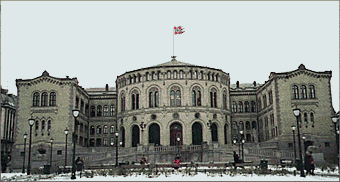
The facade of the Storting (Norwegian Parliament)
Photo: Øyvind Tønnesson
A political prize
To decide who has done the most to promote peace is a highly political matter, and scarcely a matter of cool scholarly judgement. The task requires an ability and a will to view conflicts in the world community as objectively as possible while keeping a strong commitment to certain common moral and political principles. Should the members of the Nobel Committee be expected to have such qualifications? Is it possible for five individuals from a small country on the northern periphery of Europe to make decisions on the basis of some universal interpretation of peace? Isn’t it more likely that their judgements would either be in accordance with the national interest of their country or divided along the same ideological lines which distinguish Norway’s political parties from one another? Critical questions and protests against the decisions of the Norwegian Nobel Committee have been raised on a number of occasions since 1901. As a matter of fact, some people strongly objected to the whole idea that a Norwegian body should be given the task of awarding the Peace Prize. Until 1905, Norway and Sweden were in a union under a common Swedish-Norwegian king. The Norwegian parliament was increasingly dominated by national liberals who worked to further Norwegian self-governance within the union, and eventually to dissolve the union altogether. Swedish conservatives feared that the Norwegians would abuse the Peace Prize in their struggle for nationalistic ends.
Why a Norwegian Nobel Committee?
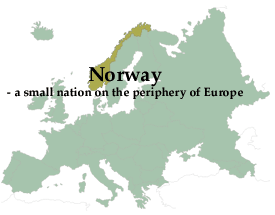 |
Alfred Nobel himself never told anybody why he didn’t give a Swedish body the task of awarding the Peace Prize. Consequently we can only speculate what, in 1895, made the cosmopolitan Swede decide to give the task of selecting the peace prize committee to the Norwegian Parliament. There have been a number of suggestions: Nobel admired Bjørnstjerne Bjørnson, the Norwegian patriot and leading author; the Storting was the first national legislature to vote support for the international peace movement; Nobel may have wanted to distribute the tasks related to the Nobel Prizes within the Swedish-Norwegian union. Nobel may also have feared that the highly political nature of the Peace Prize would make it a tool in power politics and thereby reduce its significance as an instrument for peace. A prize-committee selected by a rather progressive parliament from a small nation on the periphery of Europe, without its own foreign policy and with only a very distant past as autonomous military power, may perhaps have been expected to be more innocent in matters of power politics than would a committee from the most powerful of the Scandinavian countries, Sweden. In his will Nobel wrote: «It is my express wish that in awarding the prizes no consideration be given to the nationality of the candidates, but that the most worthy shall receive the prize, whether he be Scandinavian or not.” During the 20th century eight Scandinavians have become Peace Prize laureates. There have been five Swedes and one Dane; only two Norwegian nationals, Christian L. Lange and Fridtjof Nansen, have received the Prize. The geographical distribution of laureates would appear to reveal little or no Norwegian or Scandinavian chauvinism; on this point the Norwegian Nobel Committee may be said to have observed the provisions in Nobel’s will. However, the number of Norwegians on the list of Laureates is not necessarily a good indicator of the influence of national considerations on committee decisions. From a Norwegian point of view, goodwill from other nations might, especially at the beginning of the century, have been more valuable than having a large number of Norwegian Laureates.
The independence of the committee
The committee is formally independent even of the Storting, and since 1901 it has repeatedly emphasized its independence. However, as can be seen from the composition of the committee, during the first decades it was closely linked not only to the Norwegian political establishment in general, but also to the Government.
This was changed in 1936, when the prize was awarded to the German peace advocate, Carl von Ossietzky. That decision was, as expected, highly controversial and caused sharp reactions from Hitler himself. The Norwegian Foreign Minister and a former Prime Minister both had withdrawn from the committee’s discussions in order to emphasise that the award was not an act of Norwegian foreign policy. The year after, the Norwegian Storting formally decided to ban members of the Government from the Committee. A second change was made in 1977, when the Storting decided that its members should not participate in nonparliamentary committees appointed by the Storting itself. Since then the Storting has generally appointed former MPs and other persons with political knowledge and experience to the Committee.
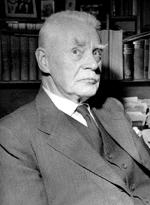
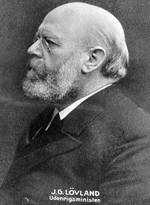
Halvdan Koht, historian and Labour politician. He was the last person to be member of both the Nobel Committee and the Norwegian Government at the same time.
Photo: Courtesy of the archive of the A/S Kunnskapsforlaget, Oslo.Jørgen Løvland, chairman of the Norwegian Nobel Committee in 1901-1922. A leading liberal and Norwegian patriot, he also was Norway’s first Foreign Minister in 1905 and Prime Minister in 1907-08.
Photo: Courtesy of the archive of A/S Kunnskapsforlaget, Oslo.
From nomination to ceremony
The prize award ceremony on December 10 is the final result of a long selection process. The rules permit a division of the prize among no more than three Laureates. The Norwegian Nobel Committee bases its assessment on nominations that must be postmarked no later than 1 February each year. Later nominations are included in the following year’s discussions. In recent years, the Committee has received well over 100 different nominations for the Peace Prize. (The numbers of nominating letters are much higher, since many are for the same candidates.)
Nominators and campaigns*
The following are entitled to nominate candidates for the Nobel Peace Prize:
- Present and past members of the Nobel Committee and the advisers at the Nobel Institute.
- Members of national assemblies and governments, and members of the Inter-Parliamentary Union.
- Members of the Permanent Court of Arbitration and the International Court of Justice at the Hague.
- Members of the Commission of the Permanent International Peace Bureau.
- Members of the Institut de Droit International.
- Present university professors of law, political science, history and philosophy.
- Holders of the Nobel Peace Prize.
Observing the rules given in the statutes of the Nobel Foundation, the Committee does not publish the names of candidates.
Professional advisers
Working under guidance of the committee’s secretary, its permanent advisers, or advisers specially called upon for their knowledge of specific candidates, report on the nominees for the year. Most of the work goes into reviewing the qualifications of the candidates on the committee’s “shortlist”, i.e. those whom it has found most suitable. The advisers do not directly evaluate nominations: that is the committee’s responsibility. Neither do they normally give any explicit recommendations as to whether the prize should be awarded to certain candidates or not. However, from their descriptions of the nominees it is often possible to conclude their basic attitude. Today, the composition of the Committee’s shortlist and the advisers, as well as reports from earlier years, are important sources to the history of the Nobel Peace Prize.
Until 1903, the committee secretary, Christian L. Lange, wrote all reports on the candidates. Only when the Norwegian Nobel Institute was established in 1904 did the secretary get assistance from permanent part-time advisers. For many years there were three such advisers, normally scholars in international law, history, and political economy. Since the 1980s, most of the Committee’s four permanent advisers have been professors either in history or in political science at the University of Oslo.
The Norwegian Nobel Committee has decided …
The announcement of the Laureate’s name is not made on a fixed date, but is often made on a Friday in mid-October. The announcement takes place in the Nobel Institute building and has become a major news event. The Peace Prize is awarded annually on 10 December, the day on which Alfred Nobel died in 1896. From 1905 until 1946, the actual ceremony was held at the Nobel Institute. From 1947 on, the setting was the Aula of the University of Oslo. In 1990, the event was moved to the Oslo City Hall. Unlike the prize award ceremony in Stockholm, it is the Chairman of the Nobel Committee, and not the King, who presents the diploma and the medal.
This is meant to emphasise the independence of the Nobel Committee. The Norwegian King is present at the ceremony, however, as are the members of Government, and of parliament and an invited audience. Several hundred seats are reserved for persons with special reasons for wishing to attend particular ceremonies, e.g. persons who have themselves been involved in the activities for which the Laureate is being awarded the Prize. Later the same day, the Nobel Committee hosts a banquet in honour of the Laureate, with specially invited guests. As a rule, Laureates deliver a so-called Nobel Lecture in connection with or shortly after the award ceremony. The lectures, and brief accounts of the ceremonies, are subsequently published in the annual book series Les Prix Nobel, both at web sites of the ENM and that of the Norwegian Nobel Institute.
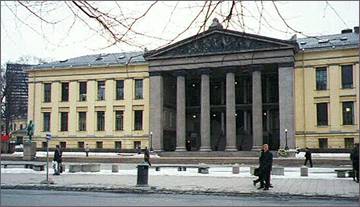 |
| From 1947 until 1989, the Nobel Peace Prize Award ceremony took place at the auditorium of the University of Oslo. Photo: Øyvind Tønnesson |
Since 1901: Members and substitutes
The Norwegian Nobel Committee 1945-1966: Labour majority, liberal chairman
The Norwegian Nobel Institute
Sources of the history of the Nobel Peace Prize
First published 1 December 1999
* The criteria for nominators have somewhat changed since the article was written.
See updated information here